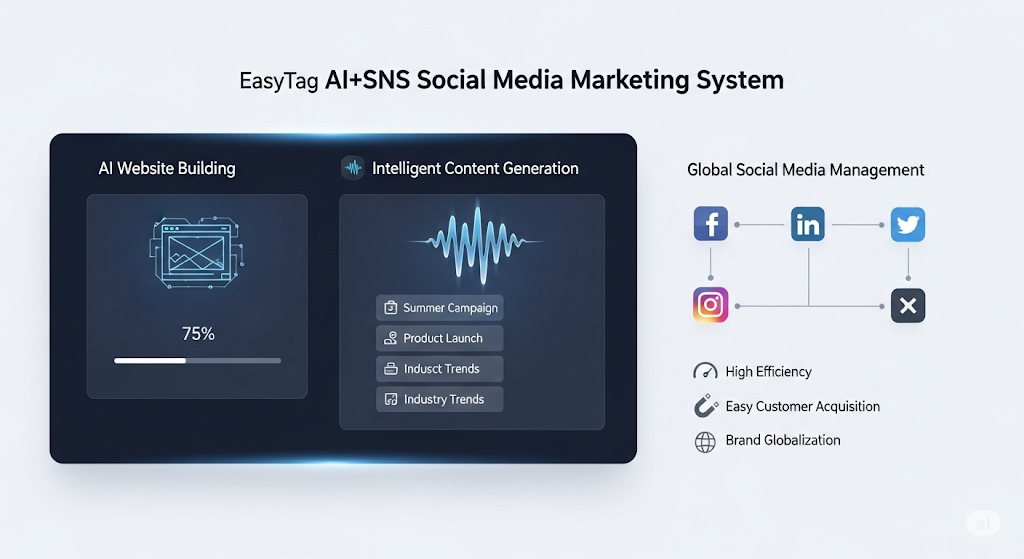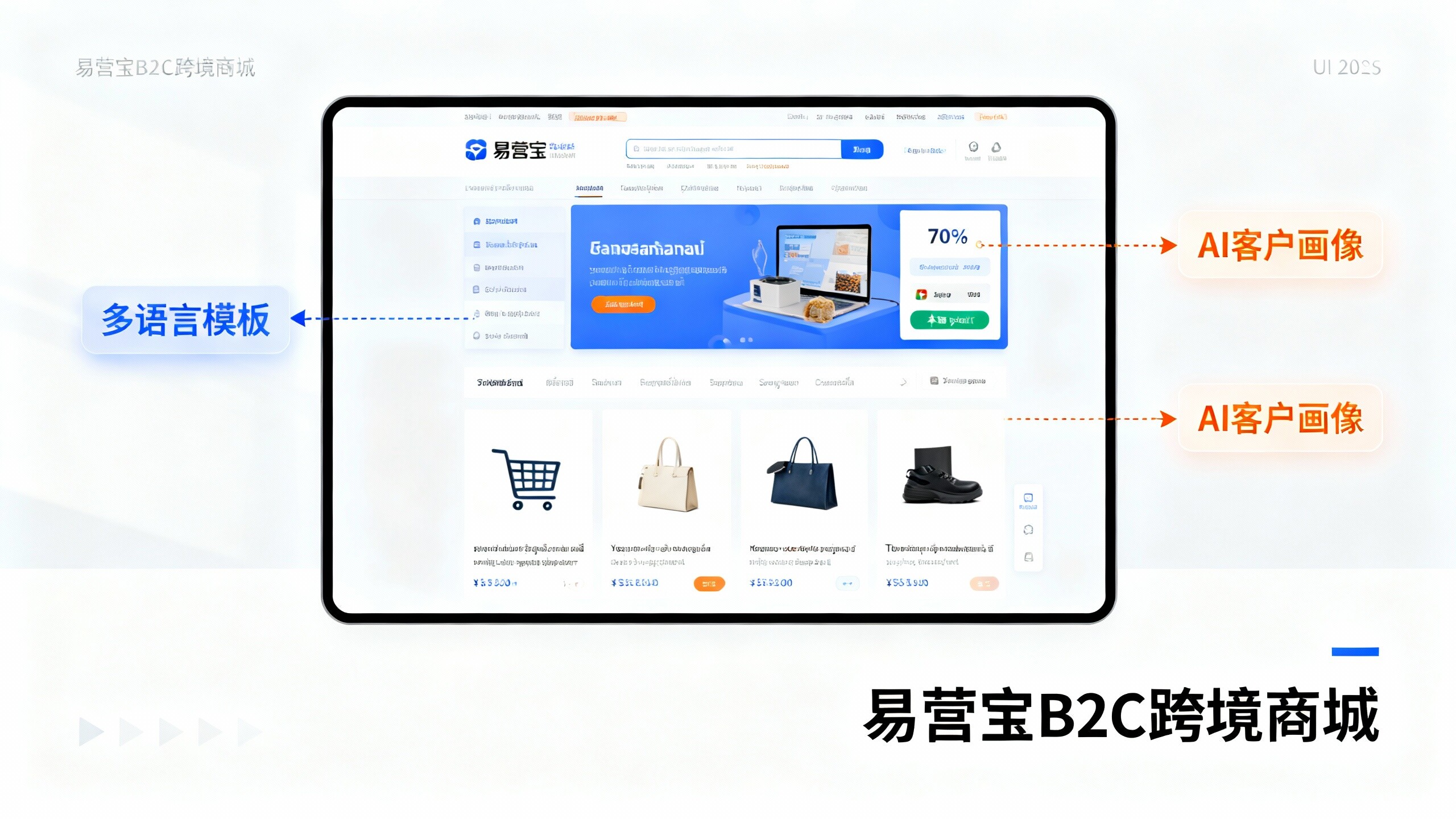- Why Must Foreign Trade Enterprises Have Independent Websites in 2024? Market Trend Analysis2025-12-20View Details
- 0000 Smart Website Building Platform Industry Discussion: Which Platform Has the Shortest and Most Reliable Delivery Cycle?2025-12-20View Details
- Smart Website Industry Analysis: 2024 B2B Market Trends and Selection Guide2025-12-19View Details
- IDC SaaS Platform User Satisfaction Survey: Which Platform Offers the Most Considerate After-Sales Service?2025-12-19View Details
- Is the cost of building a foreign trade independent website high? How does the budget impact multilingual support for different languages?2025-12-19View Details
- How to Improve Inquiry Quality Through B2B Standalone Site Optimization + Multilingual Website in 2025: Google SEO Practical Methods2025-12-18View Details
- B2B Website Comparison: Facebook Marketing vs Google Advertising Which Improves Inquiry Quality and ROI2025-12-19View Details
- AI Advertising Platform Selection Guide: Cost, Effectiveness, and Platform Stability Comparison2025-12-19View Details
U.S. Tax Hike Storm Coming! How can foreign trade enterprises turn the tide against the wind?
Recently, the United States announced that it would impose a 25% tariff on goods from Canada and Mexico, and a 10% tariff on goods from China, starting from February 1. This move marks another escalation of the Trump administration's protectionist policy, and the global trade pattern may usher in a new round of reshuffle. For foreign trade companies, this is both a challenge and an opportunity. This article will deeply analyze the impact of the US tax increase and provide foreign trade companies with coping strategies to help them find opportunities to turn things around in the face of headwinds.

1. Background and Impact of US Tax Increase
1. Direct impact of tax increase policy
The United States is one of the largest trading partners of China, Canada and Mexico. In 2022, the total imports from these three countries will reach 1.2 trillion US dollars, accounting for 43% of its total imports. After the implementation of the tax increase policy, the US economic growth rate is expected to decline by 1.5%, 344,000 jobs may disappear, and each American family will spend an additional 830 US dollars per year. These data show that the tax increase not only affects the US domestic economy, but also has a huge impact on the global supply chain.
2. Restructuring of global supply chains
The tax increase policy will push up the prices of imported goods, leading to higher production costs for companies. In order to avoid high tariffs, some companies may move their production lines to Southeast Asia and other regions that are not affected by high tariffs. For example, Chinese companies in Canada and Mexico may move some of their operations to countries such as Vietnam and Thailand. This reorganization of the supply chain will directly affect the economies of countries that rely on exports to the United States, and may even cause social problems.
3. Fluctuations in financial markets
The tax increase policy will also cause investors to worry about the global economic outlook, and capital may flow out of emerging markets, triggering sharp fluctuations in stock and foreign exchange markets. For foreign trade companies, this means that exchange rate risks and financing costs may increase further.
II. Challenges faced by foreign trade enterprises
1. Rising costs and shrinking profits
The tax increase directly pushes up the cost of export goods, and companies have to face the dilemma of profit compression. If costs cannot be effectively controlled, some small and medium-sized enterprises may be forced to exit the market.
2. Increased market uncertainty
The Trump administration's policy style has always been known for being "unpredictable", which means that more trade protection measures may be introduced in the future. Foreign trade companies need to pay close attention to policy changes and be prepared to respond.
3. Intensified competition
With the reorganization of the supply chain, competition in the global market will become more intense. Enterprises not only need to compete with local peers, but also face challenges from emerging manufacturing countries such as Southeast Asia.
3. Countermeasures of Foreign Trade Enterprises
Despite the challenges, opportunities often lie in crises. The following are some strategies that foreign trade companies can adopt:
1. To adjust product structure and explore new markets, a multilingual foreign trade website is an essential tool!
Companies that rely on the US market need to adjust their product structure as soon as possible and explore emerging markets such as Europe and Southeast Asia. Multilingual foreign trade websites are essential tools! For example, Europe has a strong demand for high-quality consumer goods, while the Southeast Asian market has a large demand for cost-effective industrial products. Companies can quickly enter new markets through multilingual foreign trade websites, localized marketing strategies, and multilingual websites that conform to local languages.

2. Two-pronged approach to seize traffic
In the digital age, online marketing is an indispensable tool for foreign trade companies. Companies can adopt a "two-pronged" strategy, on the one hand, to obtain accurate traffic through Google promotion, and on the other hand, to use social media (such as Facebook, Instagram, TikTok) to increase brand exposure. For example, make short videos to show product advantages, or interact with potential customers through live broadcasts.

3. Seize the opportunity of RMB internationalization
The US's protectionist policies may lead to a decline in the use of the US dollar in global trade. Foreign trade companies can take this opportunity to promote RMB settlement and reduce exchange rate risks. At the same time, companies can also enhance their competitiveness in the international market by improving product quality and service levels.
4. Improve people’s spending power and create a domestic demand market
China is gradually becoming the world's largest consumer market. Foreign trade companies can attract domestic consumers by improving product added value and service levels. For example, they can launch customized products or provide value-added services to meet consumers' personalized needs.
5. Strengthen supply chain management
In order to cope with the challenges brought by supply chain restructuring, enterprises need to strengthen supply chain management and optimize production layout. For example, setting up production bases in Southeast Asia can avoid high tariffs and reduce production costs.
IV. Future Outlook: Challenges and Opportunities Coexist
Although the US tax increase policy has brought uncertainty to the global economy, it has also provided Chinese foreign trade companies with opportunities for transformation and upgrading. By adjusting market strategies, optimizing supply chains, and enhancing brand value, companies can definitely find new growth points amid the headwinds.
1. The rise of the Chinese market
As China's economy continues to grow, the importance of the domestic market has become increasingly prominent. Foreign trade companies can adopt a "both internal and external" strategy to develop international markets and deepen domestic markets, thus achieving dual-wheel drive.
2. Acceleration of RMB internationalization
The U.S. trade protectionism policy provides an opportunity for the internationalization of the RMB. Foreign trade companies can reduce their dependence on the U.S. dollar and enhance their voice in international trade by promoting RMB settlement.
3. Driven by technology and innovation
In the context of globalization, technology and innovation are the core of corporate competitiveness. Foreign trade companies can seize market opportunities by increasing R&D investment and launching more competitive products.

V. Conclusion
The US tax increase policy has undoubtedly brought a huge impact on global trade, but for Chinese foreign trade companies, this is both a challenge and an opportunity. By adjusting market strategies, optimizing supply chains, and enhancing brand value, companies can find new growth points in the face of adversity. As the saying goes: "Opportunities are born in crises, and only action can win the future." Foreign trade people, are you ready?
Get more practical tips on foreign trade! Leave your questions in the comments section and let’s discuss how to turn the tide!
If you have any questions about the construction and operation of foreign trade websites, please contact Yiyingbao technical customer service WeChat: Ieyingbao18661939702, and the staff will answer you wholeheartedly!

The picture resources are from the Internet. If there is any infringement, please contact 400-655-2477.
Related articles
Related products













